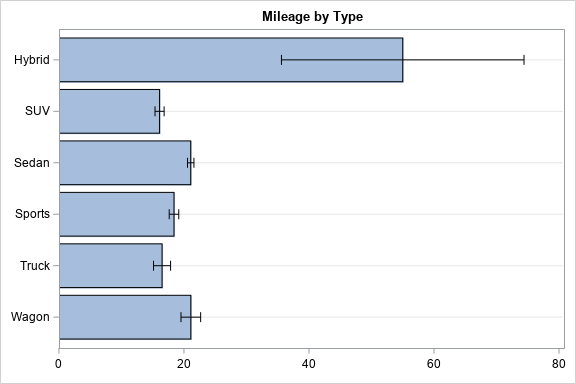|
SAS Models, Fairness Monitoring | SAS Viya June and July Release
In this month's SAS Viya Release Highlights Show, we focus on ready-made AI models and how SAS is bringing AI directly to your doorstep. Our experts will also discuss the Trustworthy AI Life Cycle and publishing SAS models in Databricks in SAS Model Manager. Plus, hear about some exciting SAS Studio updates including the new data connection manager, code editor, and job enhancements. Additionally, we highlight new features such as the DuckDB Access Engine in SAS Studio, an LLM custom step generator with Azure OpenAI and more!
Cohen's D statistic in SAS
When comparing the means of two groups, it can be useful to standardize the measurements. A popular standardized statistic in the social sciences is called Cohen’s d. In this blog post, Rick Wicklin discusses Cohen’s d statistic and how to implement it in SAS. In a follow-up post, he shows how to obtain confidence intervals, too.
SAS Tutorial | Partitioning Data in Model Studio - for SAS Enterprise Miner Users
When building predictive models, honest assessment on a hold-out sample is the tried-and-true method to best guarantee model generalizability as well as to obtain a fair measure of model performance. In this SAS How To Tutorial, Senior Analytic Training Consultant Jeff Thompson explains the differences and similarities between partitioning data in Model Studio versus SAS Enterprise Miner.
SAS 9.4 News for z/OS (MVS)
SAS is actively testing SAS 9.4M8 and M9 on IBM’s upcoming z/OS Version 3 Release 2 and z17 systems, with plans to support the 64-bit IBM Semeru Runtime Certified Edition for z/OS. These efforts reinforce SAS’s commitment to hybrid cloud and AI readiness for enterprise clients leveraging mainframe platforms.
A case of nostalgia: Clippy once walked so that AI could run
Reflecting on the quirky legacy of Clippy, Jarno Lindqvist explores how modern AI copilots have evolved into context-aware assistants that boost productivity, enhance decision-making, and support developers with intelligent coding tools. It highlights the shift from novelty to necessity as AI becomes an integral part of everyday workflows.
CI/CD for Python and SAS: Build modern workflows with GitHub Actions
Sean Ford shows us how to modernize legacy SAS workflows by integrating Python and automating processes using GitHub Actions and SAS Viya Workbench. This guide walks through building collaborative CI/CD pipelines across diverse development environments, streamlining production and boosting efficiency.
Build without bias: Bias mitigation built-in with ML procedures in SAS Viya
SAS Viya now features built-in bias detection and mitigation across its machine learning procedures, helping users create more ethical and trustworthy AI models. This update reduces manual effort and addresses critical issues like prediction, training data, and intersectional bias to prevent discriminatory outcomes.
Demand planning with SAS
Discover how SAS Demand Planning on Viya 4 empowers retailers to sense demand shifts in real time, optimize forecasts with machine learning, and drive agile supply chain decisions. Learn how intelligent planning tools help deliver the right product, in the right quantity, at the right time.
Building seamless data pipelines across multiple languages: A life sciences and healthcare use case ...
Emmett Smith demonstrates how combining SAS and R in a unified environment streamlines data science workflows in life sciences and healthcare. This reduces friction, boosts collaboration, and enables seamless transitions from data cleaning to model development and app deployment.
Revolutionizing motor insurance: A model for automated claims assessment
SAS is streamlining motor insurance claims by automating the entire process, from uploading accident images to predicting damage and accessing policy details. This integrated solution improves speed, reduces fraud and human error, and enhances the customer experience by combining data management, machine learning, and user-friendly tools.
|






